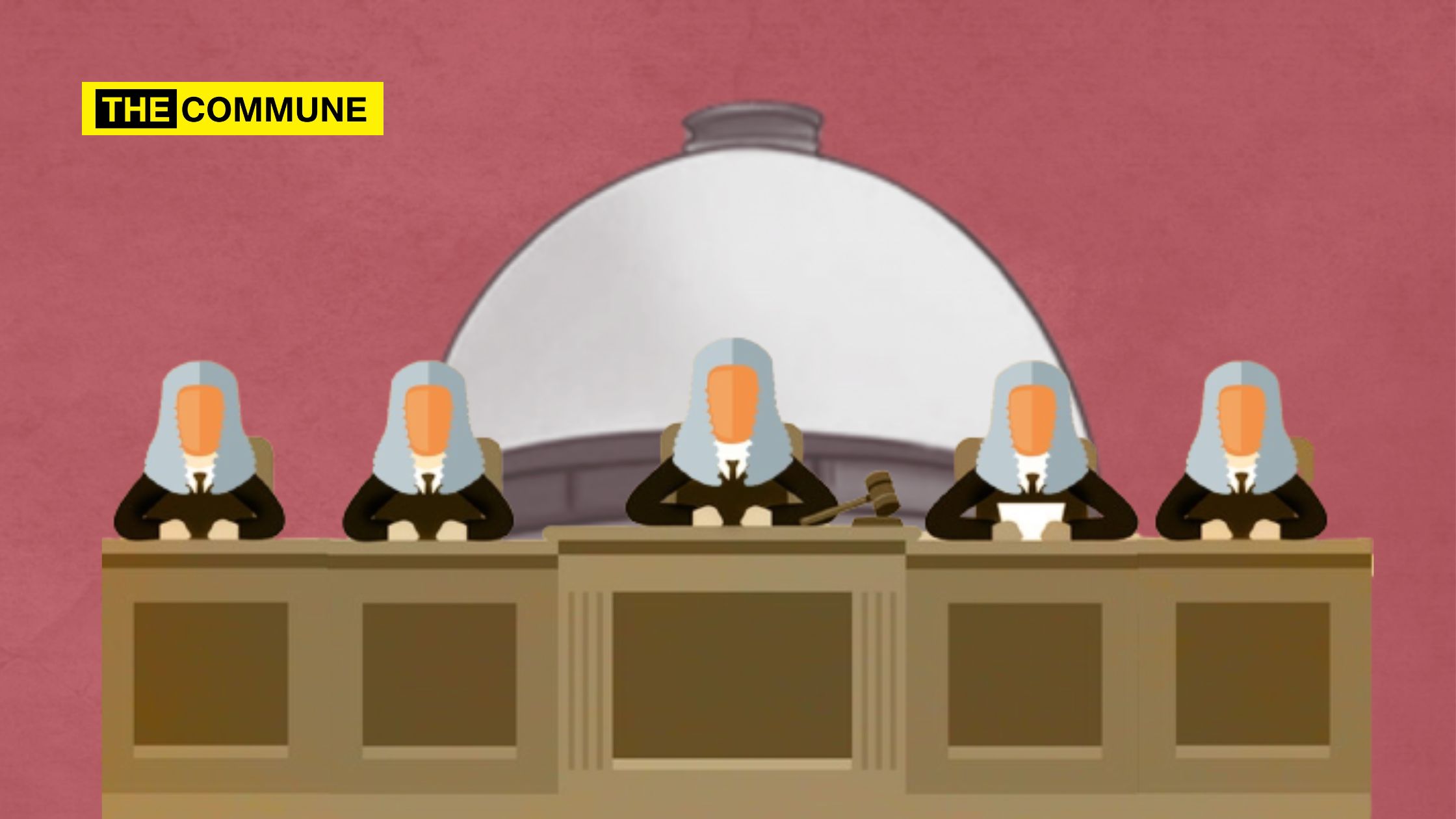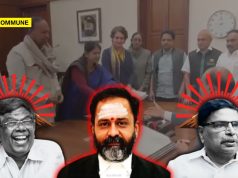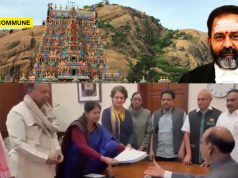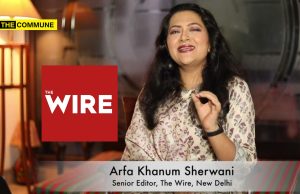
The recent ruling by the apex court, concerning the appointment of the Chief Election Commissioner, resulted in a backlash from the electorate on social media. Many cited the idea of separation of powers, envisioned in the Constitution, and how the Supreme Court, in the garb of pursuing neutrality within the Election Commission, was interfering in the jurisdiction of the elected representatives.
However, this was not the first, or even the last time, that the apex court indulged in judicial activism. The blatant judicial overreach to take over selection of Election Commission despite repeated assertions of President, Vice President, Law Minister not to transcend the division of powers enshrined in the Constitution shows another instance of systematic overreach by the judiciary. Even though Supreme Court zealously fights for its own independence and upholds the questionable collegium system, the same Court often conveniently ignores the need to respect the doctrine of separation of power in case of other organs of the state. Even with large judicial backlogs the focus of the top court seems to be on unnecessary interference with governance issues instead of putting the wheels of justice in motion. In context of this, we will look in to past instances of judicial overreach and understand why Supreme Court should mind its own business.
Before identifying crux of the issue, we must get familiarised 3 key terms; judicial activism, overreach, and restraint. Judicial Activism signifies the proactive role of the judiciary in protecting the rights of citizens. Judicial Activism signifies the proactive role of the judiciary in protecting the rights of citizens. Judicial Activism has led to a controversy regarding the supremacy between Parliament and Supreme Courts. When Judicial Activism goes overboard, and becomes Judicial Adventurism, it is referred to as Judicial Overreach. In simpler terms, it is when the judiciary starts interfering with the proper functioning of the legislative or executive organs of the government. Judicial Overreach is undesirable in a democracy as it breaches the principle of separation of powers. The next key term is judicial restraint. Judicial Restraint is the antithesis of judicial activism. Judicial Restraint is a theory of judicial interpretation that encourages judges to limit the exercise of their own power.
In short, the courts should interpret the law and not intervene in policy-making. Judges should always try to decide cases based on: the original intent of those who wrote the constitution, precedent – past decisions in earlier cases. Also, the court should leave policy making to others. Here, courts “restrain” themselves from setting new policies with their decisions. In India what is happening is the opposite of this. Judiciary is overreaching its limits clogging smooth governance system of the nation.
The government of the day, elected by the people of India through elections that were fought fair and square, are courting a supreme problem. In what can be termed as a direct violation of Article 324, the apex court restricted the government’s ability to appoint the Chief Election Commissioner (CEC) and other election commissioners. Article 324 deals with the composition of the Election Commission, and in the most unambiguous fashion, reserves the power with the President when it comes to the appointments. Therefore, multiple questions arise, if there is no accountability when it comes to the appointment of the CJI, why must they be allowed to force themselves to be part of the said committee? (One must note how Supreme Court vehemently opposed NJAC – an accountable system for appointment of judges)
The next question is how can we determine the neutrality of the Chief Justice of India?
What was defined as the prerogative of the President of India alone in the Constitution has today been virtually hijacked by the judiciary in the name of safeguarding democracy. The apex court declared that the appointment of the CEC and other commissioners would be done by the President, but based on the advice tendered by the committee that is made up of the Prime Minister of India, the Leader of the Opposition in the Lok Sabha (or the leader of the largest party in the opposition), and the Chief Justice of India.
While the presence of the opposition leader in such a committee is needed as a check and balance, where lies the justification for the judiciary to interfere in the appointment process? If our memory serves us right, last time when the legislature tried to ensure accountability for judiciary in form of NJAC – an inclusive body consisting of members of legislature, executive, judiciary and civil society, Supreme Court struck it down in the name of “independence of judiciary”, but it is ironical that the same court is violating that principle again and again.
The absurdity of judicial overreach hangs on the fact that judiciary presumes that except themselves everyone is corrupt. There are no holy saints in any institution, and that includes the Supreme Court. The observation by Justice Joseph is note worth noting in this case. Lordship reportedly said that India needs a system that can act against the elected Prime Minister of India.
While the court in all its magnanimity sobs over independence of Election Commission, it is to be noted that no rules of accountability applies to ‘your lordships.’ For example, the judges of India as Government servants are supposed to inform the Government of their trips outside India but the judiciary in India has removed that rule. So, whom are the judges meeting? What do they do abroad? Why can’t they disclose the expenses incurred? Do the lordships consider themselves to be reincarnation of the lord himself/herself? These are questions which are unanswered and judiciary is happy to maintain that in that manner itself.
It is also worth noting a few recent instances in which the court demonstrated zealous judicial interference to have a clear understanding about seriousness of the issue. One of the recent absurdities was the apex court lambasting the government for the farmers’ protests, even when many senior ministers, visiting Punjab, had tried to reason with them.
The apex court stayed the implementation of the laws, factoring the protests from the farmers of only one state and ignoring the successes of the private sector in more than 90 per cent of the agricultural output of this country. While conveniently staying the implementation of the laws, the then CJI had remarked that the courts cannot decide who can and cannot enter Delhi. While the latter observation was correct, it was the selective inaction before 26 January 2021 that was partially responsible for the arson that happened around the Red Fort. Less than a week before Republic Day, the court ignored the security concerns pertaining to 5,000 tractors entering Delhi, raised through an application filed by the Delhi Police. The apex court, ironically, was worried about not having the authority. Eventually, what followed was a result of the selective inaction of the courts. Perhaps the most severe online backlash, in recent years, against an observation of the apex court came during the hearing where a former BJP spokesperson requested that the FIRs against her, for her comments on one of the news debates on the issue of Gyanvapi, be clubbed. The entire blame was put on Nupur Sharma and conveniently ignored offensive comments from the other side. In this case Supreme Court took an active role in Hindu victimization. Supreme Court’s decision to question independence of financial institutions in Adani issue even though Lordships does not possess any merits to adjudge the matter and decision to interfere in governance of cricket in India are also few examples of zealous judicial overreach.
Judiciary is no position to interfere in routine governance issues of the government of the day. By dedicating their precious hours to situations of unnecessary importance judiciary has given life to the term, ‘justice delayed is justice denied.’ As of March 2022, there are 4.70 crore cases pending across courts in India. More than 70,000 of those are pending in the Supreme Court. 40 per cent of these have been pending for more than five years. Then there is questionable conduct of the judges. For example, rape allegation against former Chief Justice, political affiliations of unnamed Justices and corruption from Andhra Pradesh against former Chief Justice. But these are topics Supreme Court prefer not to be discussed as it will reveal rot with in the Indian Judicial system. So, instead of being the almighty judging everyone, the Supreme Court shall hold a mirror on to itself to see its true form and reform. The court should reflect and take steps to keep its own house in order and ‘Your Lordships’ shall mind their own business considering interest of the nation.
Click here to subscribe to The Commune on Telegram and get the best stories of the day delivered to you personally.




